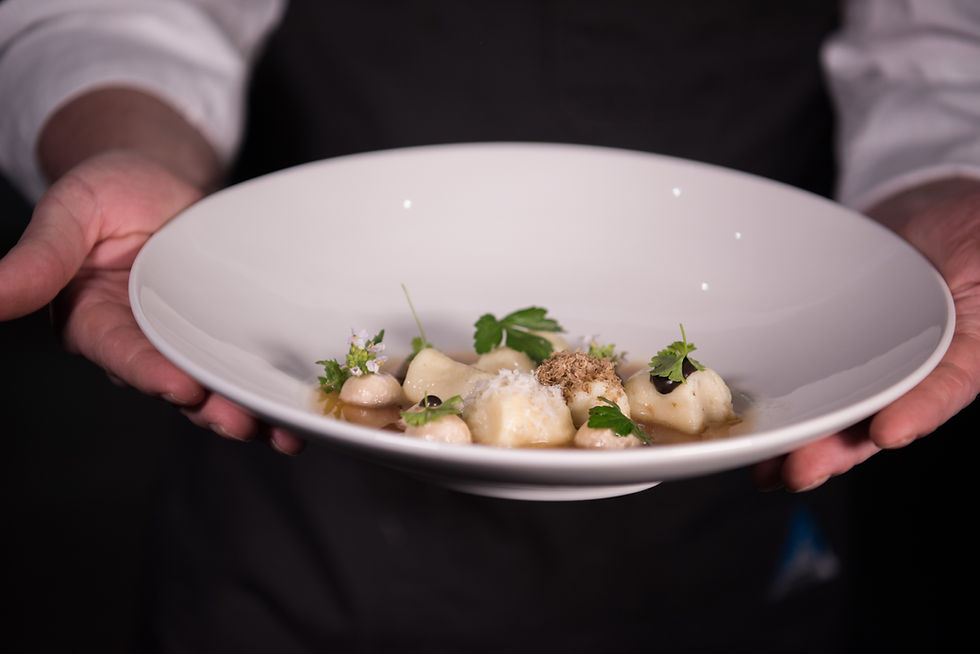Preserving Food the Old Fashioned Way
- The Culinary Vegetable Institute

- Jan 19, 2021
- 3 min read
Root Cellar Tradition Meets Modern Kitchens
Long ago, “putting up preserves” was a survival strategy and a way to preserve excess garden produce. Jars filled with fruits, vegetables and even meats weighed down cellar shelves and provided a food cache to last all winter long. Nearby, potatoes and root vegetables waited in suspended animation under cool heaps of soft soil until they were unearthed for a meal.

These days, canning and preserving are more novelty than necessity. Fewer and fewer families are passing down the practice to younger generations. That’s partly because canning isn’t a necessity anymore. We don’t have to do it because fresh fruits and fresh vegetables, often shipped long distances, are available in grocery stores year-round, no matter the season. It’s a privilege many of us take for granted.
Too Good to Waste
At the Culinary Vegetable Institute, putting up preserves isn’t a fad. It’s part of a long tradition that happens in farming communities worldwide.
“Almost every farmhouse has a cellar,” said Culinary Vegetable Institute Chef Jamie Simpson. “Our cellar celebrates global forms of preservation, which allows us to look at new ingredients with old, sometimes ancient processes, or old ingredients with new processes.”
Beyond that, preserving vegetables from The Chef’s Garden is simply one more strategy that Chef Jamie relies on to eliminate food waste and utilize every part of the plant.
Sustainable Soul Food
Case in point: Brussels sprouts leaves and stalks.
These are the big leaves that grow from the plant’s center stalk, shielding the little round sprouts from the elements. The leaves are the size of dinner plates and are substantial like kale. Chef Jamie’s preparation is essentially a Brussels sprouts riff on a familiar soul food staple ─ collard greens.
“It makes a quick lunch. Or we can use it for pop-ups,” Chef Jamie said.
(To demonstrate, Chef Jamie set up a makeshift kitchen right inside the CVI root cellar, using a PolyScience countertop induction range for a cooking surface.)
Here’s how to do it:
In a large heavy pot, render diced bacon.
Sweat a whole diced onion and cook in the rendered fat.
Add BliS soy sauce, sherry vinegar, hot pepper sauce.
Pour in one quart of pork stock and bring to a boil.
Detach all of the Brussels sprouts leaves from the stalk.
Chiffonade the leaves and stems into wide ribbons.
Add the greens to the pot.
Mound greens high and cook for about 20 minutes. They will cook down considerably.
Adjust salt.
To preserve, fill a clean canning jar with greens and top off with remaining liquid, or “pot liquor.” The greens can also be served straight from the stove.
To plate, Chef Jamie formed a bed of the prepared greens and topped them with seared, halved Brussels sprouts. The plant’s stalk, after a week “pickling” in a spent grain nukazuke, was sliced and cored into thin coins and added to the frying pan. Lastly, he quickly heated a few separated surface leaves to finish the dish.
A few other interesting items on the shelves of the Culinary Vegetable Institute root cellar include:
Dried spices and spice pastes
“Sauerkraut” of cabbage, ultra bok choy, garlic, cilantro and ginger.
Nocino, a sticky dark brown walnut liqueur
Beet vinegar
Lemon syrup
Green curry paste
Tomato ketchup puree
Fish sauces in various stages
Dried edible flowers and seed heads
Caramels from various vegetables
Spent grains from Catawba Island brewing company
A 50-gallon barrel of cherry vinegar made from local Quarry Hill cherries
Miso paste made from beans, red peas, rice and koji, allowed to ferment for a year; the paste can remain shelf stable up to 40 years
Items that have been on the cellar shelves longest include pine nut miso and preserved lemons, both dated from 2015.
(Thank you to our product sponsors: Lodge, Steelite, PolyScience, Chef’s Roll, J.A. Henckels, Sosa Aprons and BliS in the making of this video.)



Comments